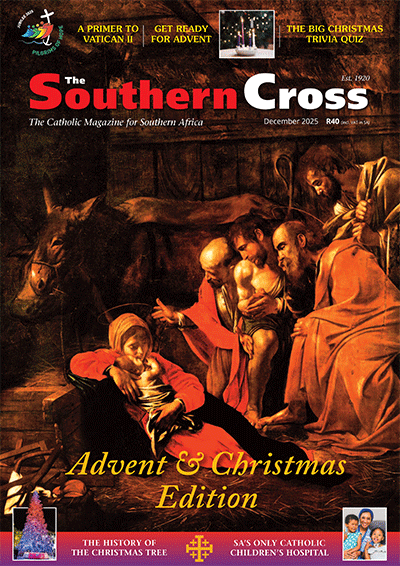Woman, Who Are You?
May is the month of Mary, a time when we reflect on Mary as Mother of Christ, Mother of the Church and our mother too. There are some beautiful qualities of motherhood that are displayed in the many Marian icons and liturgical texts dedicated to Mary. But I sometimes wonder whether we look to Our Lady’s attributes only as a mother that we forget the many other roles that she played as an ordinary woman living an extraordinary life in first-century Galilee.

Mary, with her 12-star crown and the child Jesus in a statue on top of the new Santa Maria della Grazie church in San Giovanni Rotondo, Italy. (Photo:Gunther Simmermacher)
I wonder whether our own modern view of womanhood has made Marys womanliness appear to be somewhat unattractive.
The last hundred years have seen the emancipation of women from being mostly confined to domestic and child-rearing activities in the home to becoming leaders in just about every aspect of social life.
Women’s increased public visibility has also placed a lot of pressure on their physical appearance: the need to look good and remain forever young. Women’s role as the nurturers of relationship has, to a certain extent, given way to an unhealthy focus on their physical attributes.
As a woman, I feel that we have gained a great deal in the last century, but we have also compromised on who God made us to be.
So who did God make woman to be? One of my favourite Marian passages gives a great description of Gods vision of womanhood: A great sign appeared in heaven: a woman clothed with the sun, with the moon under her feet and a crown of twelve stars on her head (Rev 12:1).
Notice that she is clothed with the sun. Light shines on her and she radiates light. Light attracts.
Think of the women you know who are filled with light. They attract others to them. Their personalities are warm, compassionate, caring. But its not a light that they keep to themselves. They share themselves with others, in the stories they tell, the wisdom and counsel they share, the way they build up those who have been crushed. Because they themselves are light, they refuse to be sucked into the darkness of self-pity or a lack of self-worth.
Mary stands on the moon. The moon is a symbol that for centuries has been linked to womanhood. The moon determines the cycles of the oceans and tides, and that same cycle also applies to women’s bodies.
When I see this image of Mary standing on the moon, I see a woman who is comfortable with her womanhood through all of its natural rhythms of youth and old age, child-bearing and menopause, being daughter, wife, mother, friend, companion, disciple.
She wears a crown. She is a queen. She is royalty, and rightly so because she is the mother of Christ. But notice that her crown is made of twelve stars, which represent the Twelve Tribes of Israel. This is a symbol for Gods chosen people. Her queenship is bound to her relationship to an entire people.
A woman’s strength is her ability to relate to others. Mary is recognised as the queen among all women because she is the one who was willing to give herself entirely in a relationship with God as his handmaid and Mother (the Annunciation) and with us as our mother (John 19:26) down all generations.
She tells us that being women is not just about us. Women are important, yes, and each woman bears the mark of royalty, for she is a daughter of the heavenly King.
But they dont exist only for themselves and their own gratification. Women are because of others. I am because you are. This is the heart of our South African principle of ubuntu. This is the heart of our womanhood.
During this May month, as we reflect on Mary, we can perhaps ask ourselves how we view ourselves as women, or, if we are men, how we see the women in our families, the women we work with, the women we encounter in social situations.
Woman, who are you?
- The New Mission Field Is Digital - November 1, 2025
- 8 Ways to Grow in Faith in the Jubilee Year - April 11, 2025
- Moral Conscience Needs More Than The Catechism - January 25, 2024




